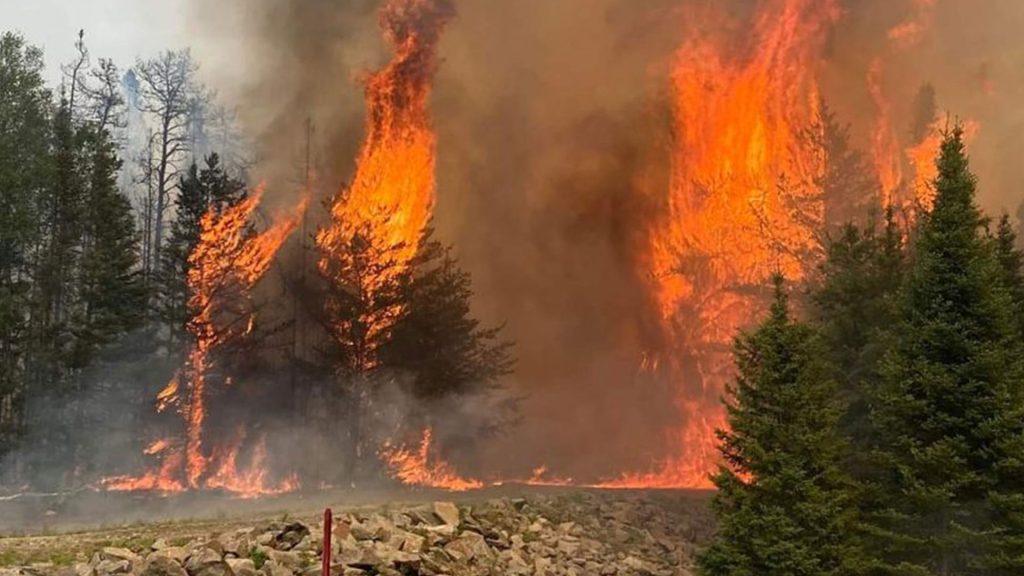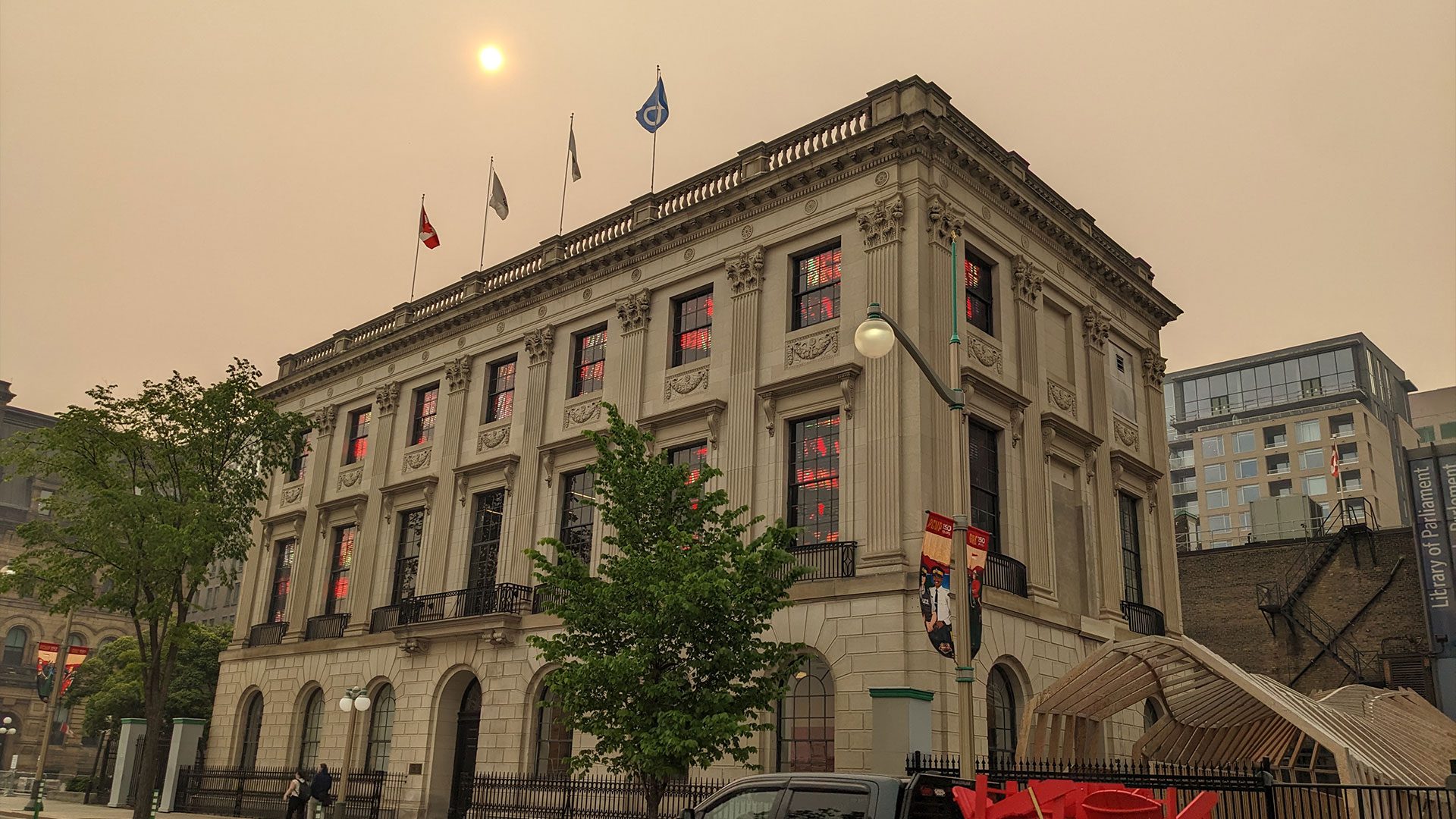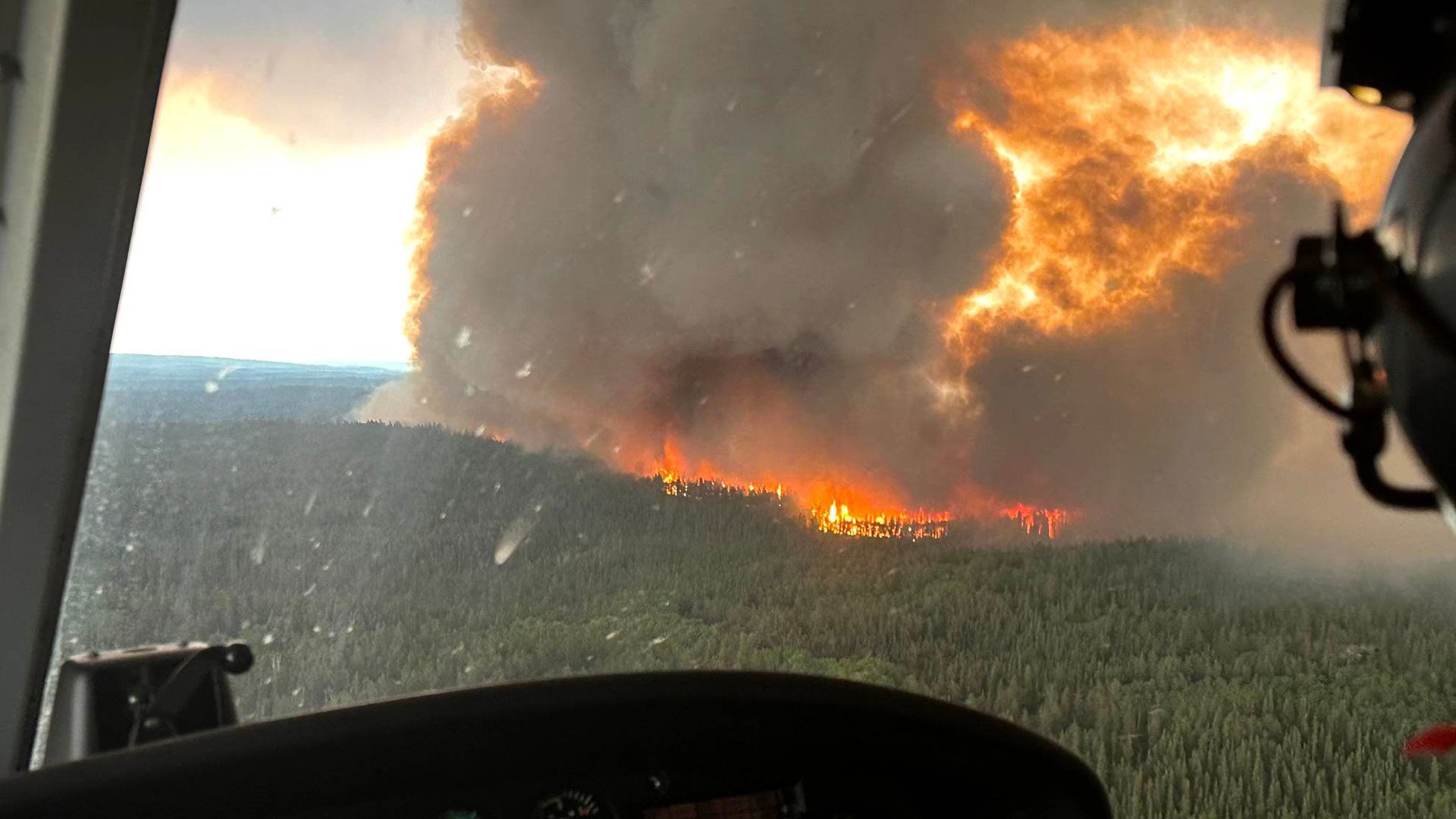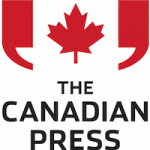
Since the beginning of June, firefighters have been battling a record number of wildfires including this one outside Algonquins of Barriere Lake. Photo courtesy: Charlie Papatie
Almost 1,200 vulnerable people from Cree communities are among the evacuees who have fled northern Quebec because of wildfires and smoke.
Dr. Francois Prevost of the Cree health board says the evacuation process has gone relatively well, but he adds that the situation poses particular health, logistical and cultural challenges.
He says the health agency is striving to maintain care for evacuees – including Elders, pregnant women and infants – who have been transferred to hotels and healthcare facilities in Montreal, Trois-Rivieres, Quebec City and Saguenay.
Health board official Virginia Wabano says the resulting division of families has taken a mental health toll in a community that places high value on familial bonding.
She adds that the displacement has also deprived community members of some of the traditional foods that make up their regular diet.
Meanwhile, Quebec’s forest fire prevention agency is reporting 110 active fires, including 73 in the southern half the province.
Canadian wildfires triggered dangerous plumes of smoke and air pollution in parts of the country Wednesday, forcing many people to avoid the outdoors as poor air quality warnings cancelled some mail deliveries and curbed school recesses and sports training.
A slew of disruptions followed special air quality statements from Environment Canada impacting large regions of central Canada, much of it stemming from forest fires over northeastern Ontario and Quebec.
The agency said “high risk” conditions were not expected to improve in some areas until Thursday when air quality was still forecasted to pose “moderate risk” in much of Ontario.
It all pointed to another day of a recommended moratorium on neighbourhood jogs and playground visits, especially for those with lung or heart disease, older adults and children who are at higher risk of adverse health effects.

Ontario’s chief medical officer Dr. Kieran Moore suggested people get into the daily habit of checking air quality this summer.
“That’s our new normal now, is to be looking at all of those parameters,” said Moore.
“Certainly, I start my day being responsible for the health of a population looking at all of those extreme weather events – air quality index, plume analysis, weather maps _ that’s my normal for the spring and summer.”
The hazy skies and acrid air were obvious in downtown Toronto, where city officials suspended outdoor activities at childcare centres in line with measures taken by Toronto school boards.
Several daycares vowed to keep little ones indoors for recess, multiple schools postponed outdoor excursions and some sports leagues alerted parents that evening training could be cancelled.
Even some Canada Post routes were halted Wednesday when the agency said poor air quality forced it to suspend mail delivery in the southern Ontario communities of Windsor and Chatham.
Meanwhile, the president of Asthma Canada said calls to his national non-profit’s helpline have nearly doubled the normal weekly and monthly rate.
Jeff Beach said many calls come from people with breathing difficulties or those caring for a child with asthma, but also from people with mild respiratory issues who nevertheless find the air quality worrisome.
“It’s difficult because what we advise people to do usually when you have asthma and lung health conditions is be as active as they can and to obviously follow their routines and regimen in terms of medication and so forth,” Beach said from Mississauga, Ont.
“They should be able to participate in outdoor activities, whether that be related to exercise or whether it be camping or any number of things that people normally would enjoy during the summer. And unfortunately, people are just going to have to be very vigilant and perhaps modify their plans because the air quality that we’re seeing is not improving and could continue to be an issue for a while to come.”

Beach said he expected summer camps and outdoor organizations to face a challenge in accommodating sudden shifts in air quality that might require substitute programming. He noted his child’s soccer practice was scrapped Wednesday.
“Normally unless there’s lightning, those kids are out there playing soccer,” he said.
“It’s good to see that people are taking it seriously and being proactive about it. That will benefit us all, not just people that have asthma.”
Still, University of Toronto professor Ira Jacobs said more could be done to educate the public about the risks posed by wildfire smoke, especially in conjunction with hot summer days that can create a “double whammy.”
“That’s the reason why we have schools that are very justifiably closing activities that will be occurring outside; cancelling recess. It’s definitely warranted when we have these air quality warnings, particularly from forest fires,” said Jacobs, a professor in exercise physiology.
Jacobs advised against exercising outdoors on days like these, and wearing an N95 respirator if long periods of time outside can’t be avoided.
He said particulate matter in wildfire smoke can carry tiny pollutants deep into the lungs.
“A large portion of what is generated by forest fires are what we refer to as very small particle sizes. And that’s not healthy, because the smaller they are, the deeper those particles are actually deposited into the lungs. And the deeper they’re deposited into the lungs, the more the harmful health challenges actually are.”
When taking his dog out for a walk this morning in the Greater Toronto Area, Jacobs said he donned an N95 after noting a disconcerting haze.
“It was definitely cloudier than normal. It was definitely darker than normal. And I thought I was smelling smokier air than normal,” said Jacobs, adding that a weather app confirmed poor air quality.
“When it’s really bad _ and we’ve had a couple of warnings of that magnitude, that severity recently _ masks are definitely warranted if you’re outside bicycling to work, or you’re outside working because you need to work. And when it comes to play and sports and workouts, which are discretionary activities _ don’t. Go inside.”
Read More:
Quebec wildfires: Cree community orders evacuation of 4K due to heavy smoke
Feds underfunding emergency preparation in First Nations communities says report
The Canadian Interagency Forest Fire Centre’s website showed 480 active fires burning across the country Wednesday afternoon, with 239 of them classified as out of control.
Environment Canada says wildfire smoke can be harmful to everyone’s health even at low concentrations.
People with lung disease or heart disease, older adults, children, pregnant people, and people who work outdoors are at higher risk of experiencing health effects.
It urges people to stop or reduce activity levels if breathing becomes uncomfortable and to contact a health care provider if severe symptoms develop.










